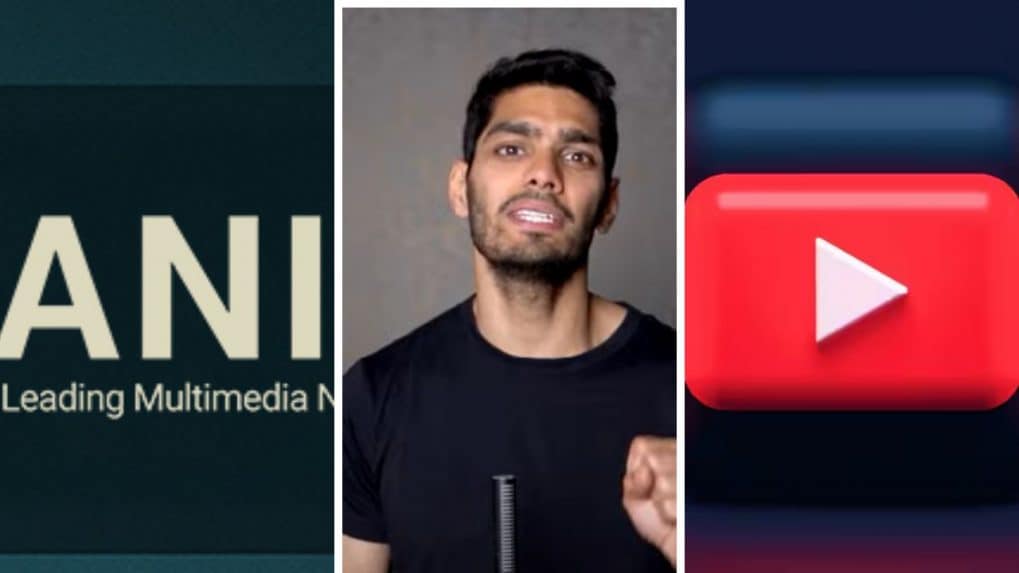ANI vs Mohak Mangal: A copyright standoff threatening India's creator economy
At the core of the controversy is whether Mangal’s use of ANI’s clip qualifies as “fair dealing” - India’s version of fair use.
ADVERTISEMENT
A fresh copyright controversy is raising questions about the balance of power between digital platforms, media giants and independent creators. YouTuber Mohak Mangal, who uploaded a 33-minute video supporting Operation Sindoor, alleges that leading news agency ANI used a nine-second clip of their footage to file a copyright strike and then demanded ₹48 lakh plus GST to reverse it. The move, he claims in a letter to Union Minister Ashwini Vaishnaw, amounts to “extortion” and poses a threat to creative expression in India.
“Veers dangerously close to extortion”
Legal experts are divided on whether ANI’s demand qualifies as "extortion" under Indian law, but some call the amount and method troubling.
“Demanding ₹48 lakh to reverse a copyright strike, particularly when the underlying claim is weak or arguably falls within fair dealing, veers dangerously close to extortion under Indian law,” said Sonam Chandwani, Managing Partner at KS Legal & Associates. “While copyright holders have a right to enforce their IP, leveraging that right to extract exorbitant sums — especially under threat of prolonged takedown or reputational harm — can amount to coercion and abuse of legal process, which courts in India have frowned upon in both civil and criminal contexts.”
Fair dealing or foul play?
At the core of the controversy is whether Mangal’s use of ANI’s clip qualifies as “fair dealing” - India’s version of fair use.
“As for the use of a few seconds of news footage, Indian copyright law under Section 52 does allow for 'fair dealing' in cases of criticism, review, or reporting current events,” Chandwani explained. “Context matters: if the use is transformative, non-commercial, and in the public interest — especially for commentary — it likely qualifies. Courts have shown willingness to protect such speech, recognizing the fundamental right to free expression under Article 19(1)(a).”
Platform neutrality or complicity?
While creators rage against ANI, scrutiny is also mounting on YouTube.
“Platforms like YouTube cannot hide behind neutrality when they create automated systems that are easily weaponized by rights holders to silence smaller creators,” Chandwani said. “They profit from content and control its distribution; with that power comes a responsibility to ensure the process isn’t abused. At a minimum, they must implement transparent, fair mechanisms and be accountable when those fail,” asserts Chandwani.
The legal shield — and its limits
Amlan Mohanty, an independent lawyer, noted that YouTube enjoys “safe harbour” under Section 79 of the IT Act — meaning it isn’t liable for user-uploaded content as long as it meets certain conditions.
“Under Indian law, specifically Section 79 of the IT Act, platforms like YouTube enjoy safe harbour as intermediaries. That means they’re not liable for user-generated content as long as they: don’t upload or modify the content themselves, don’t initiate or select the transmission, and comply with takedown requirements once notified.”
YouTube uses a three-pronged approach to enforcement- technical tools like Content ID, operational measures such as the strike system, and a legal notice-and-takedown process modeled on the US DMCA. Mohanty added, “This is self-regulated, not mandated by government.”
Is ₹48 lakh legally defensible?
Mohanty states that whether ANI’s demand amounts to "extortion" depends on deeper legal review. “Extortion has a specific legal definition — we’d need to analyze intent, coercion, and unfair advantage... If ANI used standard licensing rates, it might be legal. If they invented an arbitrary number and threatened takedown unless it was paid — that’s more questionable.”
He emphasized that copyright compensation in India is typically determined by licensing societies like IPRS or PPL — not one-off calculations.
Should the government step in?
Despite mounting public pressure, Mohanty cautions against government interference.
“Personally, I don’t support government intervention here. The law is clear, and platforms have implemented proper systems. If the issue is systemic, then yes, the government can raise awareness or encourage reform. But direct interference would be problematic.”
A moment of reckoning
What began as a takedown of one video has now grown into a flashpoint for broader digital rights.
As Chandwani points out, “Allowing unchecked takedowns by powerful entities compromises the integrity of both copyright enforcement and the digital public sphere.”
With millions of creators shaping public discourse, the ANI–YouTube–Mangal standoff may be more than a copyright dispute. It could be a defining moment for India’s creator economy.

